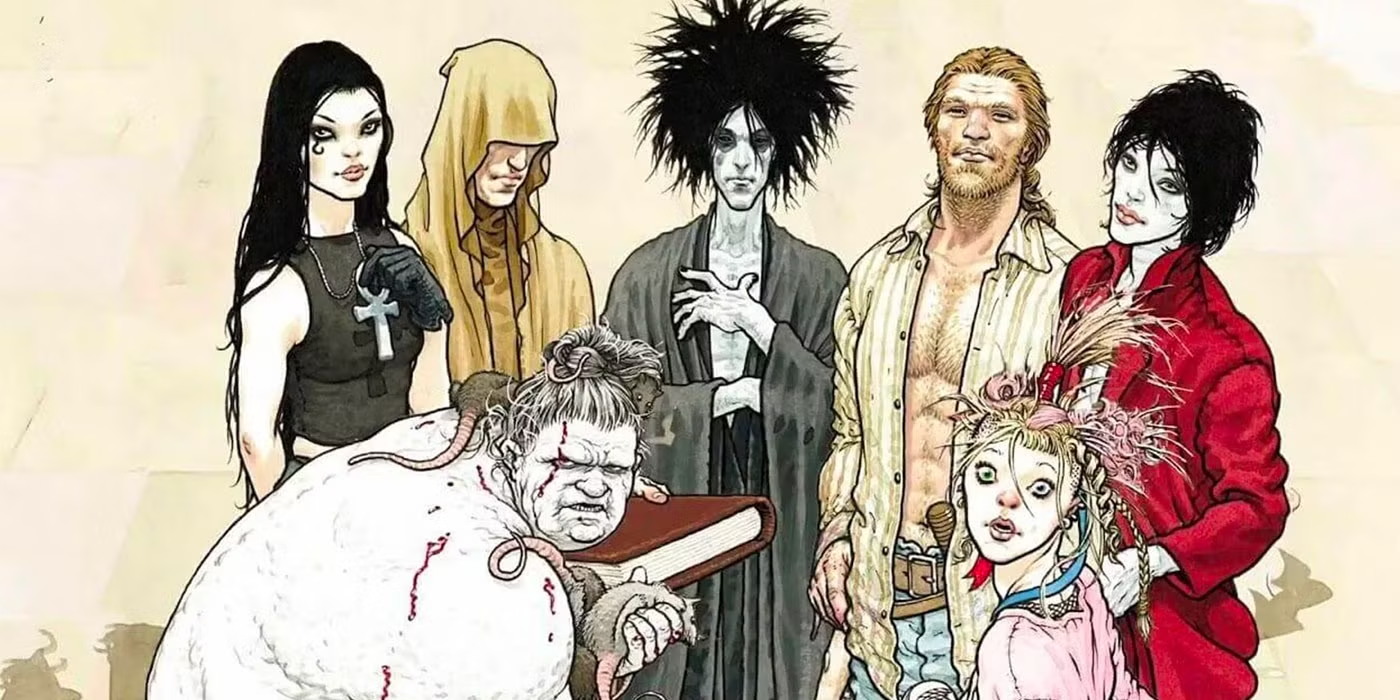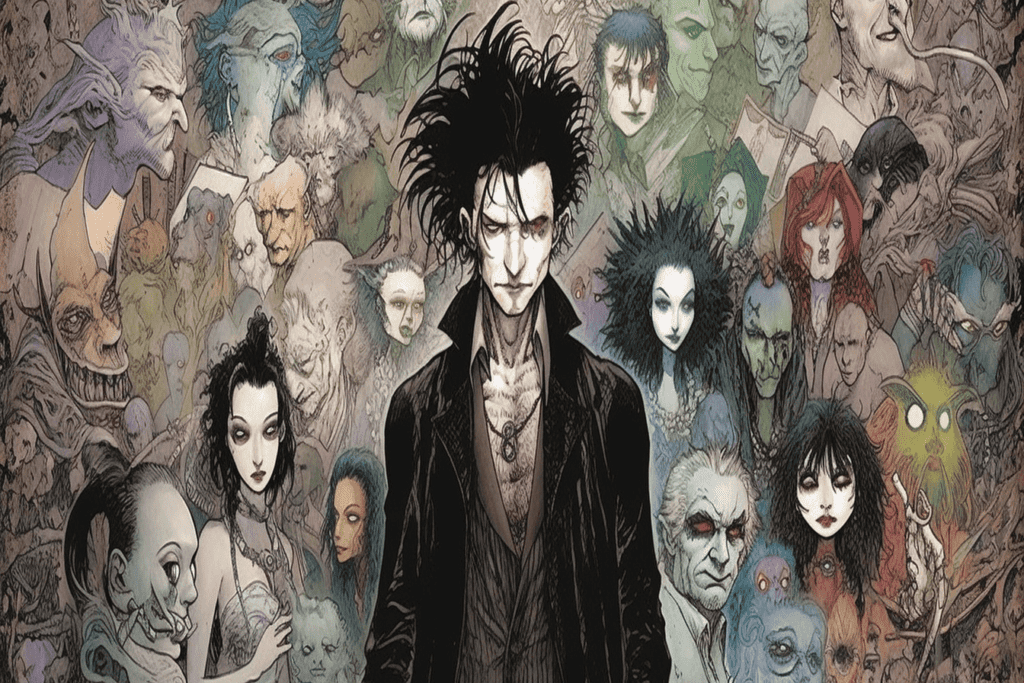Neil Gaiman’s The Sandman comic is a groundbreaking work that redefined the landscape of graphic storytelling. First published by DC Comics under its Vertigo imprint in 1989, The Sandman spanned 75 issues, concluding in 1996. This iconic series blends mythology, horror, fantasy, and literature into an intricately layered narrative that has captivated readers for decades. Its literary depth and artistic brilliance helped elevate comics into the realm of serious literature.
Origins and Publication
The Sandman comic was conceived during a transformative time in comic book history. DC Comics was experimenting with more mature content, and Neil Gaiman, then a relatively unknown British writer, was tasked with reviving an old DC character named Sandman. Instead of rebooting the existing superhero, Gaiman created an entirely new mythos centered around Dream, also known as Morpheus, one of the seven Endless—powerful, god-like siblings who embody universal concepts such as Death, Desire, and Destiny.
The series debuted in The Sandman #1 in January 1989. From its first arc, “Preludes and Nocturnes,” readers were introduced to a deeply philosophical and surreal world where reality bends and stories take on lives of their own.
Plot and Structure
At the heart of The Sandman comic is Morpheus, the personification of dreams. The story begins with Morpheus being captured by a group of occultists and held prisoner for 70 years. Upon escaping, he sets out to reclaim his lost tools of power and restore his shattered realm, the Dreaming. However, the story quickly evolves beyond this simple quest.
Gaiman’s narrative is non-linear and often takes detours into standalone issues or story arcs that feature new characters and worlds. Each arc explores different themes—love, death, identity, justice, memory, and the power of storytelling itself. The structure of the comic mimics dreams: disjointed yet profound, fleeting but unforgettable.
Major story arcs include:
-
The Doll’s House – where Morpheus deals with rogue dreams and a deadly vortex threatening reality.
-
Season of Mists – where he travels to Hell to right a wrong and ends up being offered the key to Hell.
-
Brief Lives – a deeply emotional journey with his sister Delirium to find their lost brother Destruction.
-
The Kindly Ones – a climactic arc that ties together past consequences and leads to Dream’s transformation.
The Endless and Other Key Characters
One of the most memorable aspects of The Sandman comic is its cast of characters. The Endless are not gods but ancient forces that predate humanity. Each sibling is unique in design, personality, and purpose:
-
Dream (Morpheus) – cold, prideful, but ultimately a figure of growth.
-
Death – kind, quirky, and compassionate; she subverts all traditional depictions of death.
-
Desire – androgynous and manipulative, always at odds with Dream.
-
Delirium – once Delight, her madness is laced with wisdom.
-
Despair, Destruction, and Destiny – each with their own philosophies and relationships with existence.
Secondary characters like Lucifer Morningstar (later spun off into his own series), Hob Gadling (a man granted immortality), and various mythological or historical figures (like Shakespeare, Orpheus, and Emperor Norton) enrich the series with layers of meaning and cultural resonance.
Artistic Style and Contributors
The Sandman comic is known not just for its writing but for its stunning and often experimental artwork. A host of talented artists worked on the series, including:
-
Sam Kieth, the original penciler who set the tone for the visual style.
-
Dave McKean, whose surreal and haunting covers became instantly recognizable.
-
Jill Thompson, P. Craig Russell, Marc Hempel, and others brought a diverse aesthetic to each arc, reflecting the fluid and dreamlike nature of the story.
Rather than sticking to a single art style, each story or arc was matched with an artist whose work best captured its tone, from gothic horror to whimsical fantasy.
Critical Reception and Legacy
The Sandman comic quickly gained critical acclaim, earning a rare crossover audience of comic fans, literary readers, and academics. It was one of the first comics to appear on the New York Times bestseller list and was awarded the World Fantasy Award in 1991 for “A Midsummer Night’s Dream,” a single-issue story featuring Shakespeare.

The series helped usher in a new era of mature comics and inspired countless creators. Its influence can be seen in modern fantasy literature, television, and cinema. The Sandman has been collected in multiple formats, including deluxe editions and omnibus volumes, making it accessible to new generations of readers.
Netflix Adaptation and Continued Relevance
In 2022, The Sandman comic was adapted into a high-profile Netflix series, bringing the Dreaming and its denizens to live-action for the first time. While adaptations always differ from their source, the show maintained much of the original’s tone and themes, introducing the world of the Endless to millions of new fans.
Meanwhile, Neil Gaiman continues to expand the Sandman universe with titles like The Dreaming and The Sandman Universe, curated with new writers and artists.
Conclusion
The Sandman comic is more than just a fantasy series—it is a profound meditation on human nature, storytelling, and the power of dreams. Neil Gaiman’s visionary writing, combined with unforgettable characters and evocative art, makes it a timeless classic. Whether you are a lifelong comic fan or new to the medium, The Sandman offers a rich, rewarding experience that lingers long after the final page is turned.

